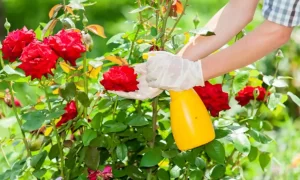
The Ultimate Guide to Growing Herbs at Home
Herbs make an excellent way for beginning gardeners to start, as they do not require special growing conditions and grow quickly and are easy to harvest – the ideal addition to a kitchen garden!
Start indoors using small pots or windowboxes made of terra cotta for optimal moisture regulation, filled with compost-enriched soil mix. A light mixture of compost-enriched soil mixed with potting soil and sand will also aid drainage.
1. Soil
Herbs require well-draining soil that is rich in nutrients. Herbs with similar nutritional needs such as basil and parsley should be planted together in order to minimize water usage by each herb and reduce overall costs associated with growing them. It’s also crucial that herbs be planted in soil that is free from contaminants that could compromise their health.
When planting herbs outdoors or containers, add compost or other organic matter to improve soil quality. Or buy commercially prepared soil/potting mix formulated to contain all necessary components necessary for their success, such as nitrogen, phosphorus and potassium; any slightly acidic soil can be modified with sulfur or lime as needed.
2. Water
Herbs are light-sensitive plants and require plenty of direct sunlight in order to thrive. For best results, place them near a south-facing window, where morning and midday sunshine are plentiful (windows facing east will get too much afternoon heat).
Make sure that your herb planter provides adequate drainage. Overwatering herbs is one of the surefire ways to kill them; stick your finger into the soil an inch down to check its moisture content; if moistness exists then hold off on watering for now.
If your herbs are planted in containers that do not allow enough drainage, use mild liquid plant food every few days to keep the water clean and algae-free. Furthermore, regular changes of water help avoid harmful pathogens from taking hold in the soil.
3. Light
As most herbs require sun to thrive, make sure you plant them near a window with ample sunshine. A south-facing window provides optimal conditions while eastern facing windows will give them morning light. If natural lighting sources are limited in your environment, consider investing in a grow light to keep your herbs happy and flourishing.
As most herbs are annual plants, which means they only live one season and then die, they make for ideal kitchen herb gardens indoors. Since herbs do not need much space, several can be packed together as long as each receives enough light without overcrowding itself. Make sure to trim regularly in order to encourage growth; trim just above each leaf node (or stem) to avoid overcrowding the plant.
4. Temperature
Herbs are highly sensitive to temperature changes and flourish in an ideal 65 to 75 degree F environment. Unfortunately, they do not tolerate drafts coming through windows or doors well and may even be killed by them.
Herbs thrive when situated near south-facing windows that receive at least six hours of direct sunlight every day, rather than directly under it, which could potentially scorch them. Aim for at least six hours of daily sun to ensure optimal results – this is especially important during winter when natural lighting may be scarce. An indoor plant light or fluorescent one may help in this regard; increasing humidity around them also has its benefits; using pots on saucers filled with pebbles adds moisture while using humidifiers can add humidity into the atmosphere; using humidifiers also works wonders in making sure your herbs thrive!
5. Space
Growing herbs is a wonderful way to discover and expand your green thumb before diving in with other edible crops like tomatoes and peppers. Plus, having fresh parsley or chives at your fingertips from your own herb garden makes for a fulfilling culinary experience! Plus growing herbs is an easy way to test out your green fingers before expanding onto growing tomatoes and peppers!
No matter if you are planning a kitchen window herb garden or using grow lights to supplement the sunlight in a less than ideal space, proper air circulation for the herbs must be ensured in their containers – I prefer terra cotta pots because they help regulate soil moisture while being affordable and accessible.
Group together herbs that require similar watering requirements in order to monitor soil moisture levels more easily and prevent one herb from overwatering another.



Average Rating